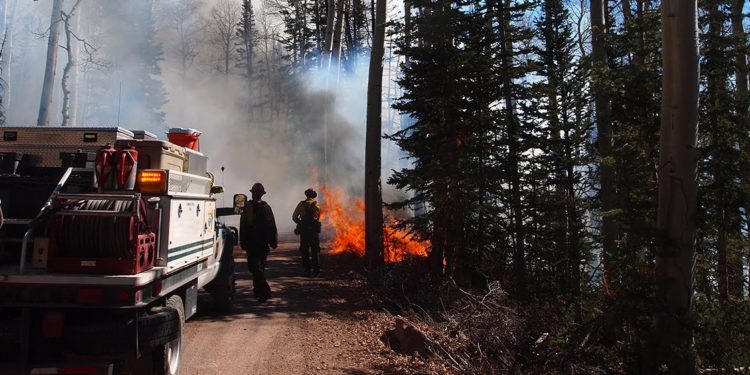Emergency Response

The Galleon advantage: How Armada and goTenna are revolutionizing tactical communications
In the chaos of austere and forward-deployed environments—remote and infrastructure-poor locations where military and law enforcement personnel must operate without traditional support—one of the greatest threats isn’t just the enemy, but the lack of reliable communication. Traditional networks are fragile, easily disrupted, and often nonexistent in these high-risk areas, leaving

8 grant programs for acquiring interoperable, resilient mission-critical comms solutions
State and local government agencies are increasingly depending on mobile devices, including smartphones, for communication and data sharing during emergency and disaster response situations. However, for many of these organizations—such as law enforcement, emergency responders, and other first responders—the cellular networks they rely on can become unavailable when needed most.

Rising above the flames: How Urban Sky’s Microballoon is transforming wildfire management
Wildfire incidents are escalating in both frequency and intensity each year, wreaking havoc on ecosystems, displacing communities, and endangering countless lives. In fact, according to a study by Nature Ecology & Evolution, the number of extreme wildfires has more than doubled over the past two decades. The unpredictable behavior and

Top 3 tips for emergency responders for maintaining contact and interoperability in challenging environments
Preparing for disaster response presents emergency responders with complex and unique challenges. They must navigate high-pressure situations where clear and reliable communication is critical, often in environments where systems may be compromised or overloaded. In addition, responders need to integrate advanced technologies, such as GPS tracking and real-time data sharing,

Data sheet | Setting up goTenna Backhaul with TAK Environments
With goTenna, you can backhaul each operator’s location to the command center right from the area of operations using satellite or Wi-Fi connectivity. Within a goTenna backhaul setup, users can send PLI, messages and objects from the goTenna mesh network, where users are only mesh-connected. Learn more about how to

Building the EdgeRelay – goTenna and Bunker on what’s needed to ensure resilient, off-grid comms
In a previous article, we discussed the recent release of goTenna’s exciting EdgeRelay solution and how this semi-permanent, ruggedized support node enables tactical operators to have mission-critical communications and situational awareness capabilities when and where the mission requires them. However, creating a system tough enough to handle the harsh conditions

Whitepaper | Integrating goTenna into Federal Emergency Management Agency Operations
Communication and situational awareness are critical to successfully manage all phases of emergency management. Responding and recovering from disasters in austere and hostile environments, where communications are almost certainly unavailable, disrupted, or destroyed, present unique emergency management challenges. As dozens or even hundreds of government agencies conduct response and recovery

How to set up an emergency response communication network to ensure crisis connectivity
All field operators— military personnel or emergency response workers—need numerous things to accomplish their mission. They require physical access to supplies, the ability to monitor their teammates, and the establishment of a main supply route (MSR). These operators also rely on communication to stay informed during dynamic situations, ask for

Demonstrating communications for Domestic Operations (DOMOPS) at Patriot 24
Every year, the Air National Guard holds its Patriot Exercise event. This training exercise brings together personnel from the Air National Guard, Federal Emergency Management Agency (FEMA), Department of Homeland Security (DHS), and multiple local, state, and federal partners for a series of simulated scenarios designed to test their ability

1-pager | TAK Plugin Integration
Harnessing the power of the Team Awareness Kit for Android (ATAK) is now more accessible than ever, serving over 40,000 Department of Defense (DoD) users and 32,000 nonfederal users. Offering cutting-edge situational awareness and field operation management tools, ATAK caters to both large-scale agencies and smaller entities alike. Yet, how



